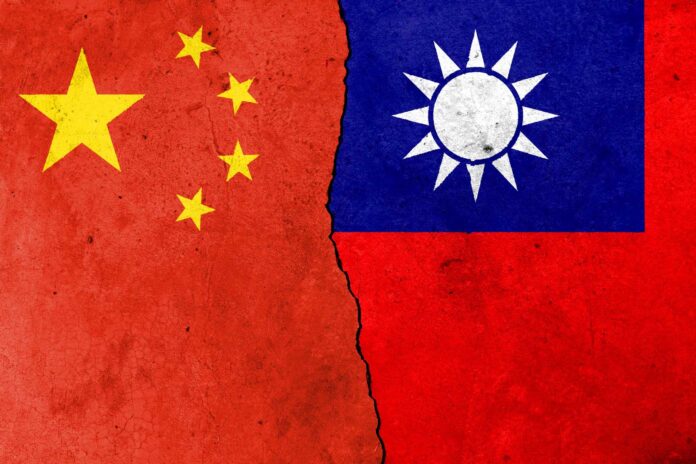China has commenced live-fire military drills off the coast of its southern Fujian province, in close proximity to Taiwan. This latest move comes only a week after conducting a massive air-and-sea exercise intended as a warning to Taiwan’s leadership, which recently rejected Beijing’s assertions of sovereignty over the self-ruled island. The recent drills, viewed by many as an escalation of tension, signify China’s intent to maintain pressure on Taiwan, whose political status remains a sensitive issue in the region.
According to a notice from the Maritime Safety Administration, the drills are being conducted near the Pingtan Islands, an area that has been a focal point of military activity in the past. The notice included a warning for ships to steer clear of the designated area, though it provided little additional information about the scope or objectives of the exercise. Live-fire drills of this nature are typically interpreted as a signal of military readiness, and in this case, an implied warning to Taiwan and its allies.
Taiwan’s Defense Ministry acknowledged the drills, stating that they are part of an annual exercise. The ministry further emphasized that it was closely monitoring the situation and was fully prepared to respond if necessary. In a statement, Taiwan’s Defense Ministry noted, “It cannot be ruled out that this is one of the ways China is seeking to enhance the deterrent effect, consistent with the ongoing dynamics in the Taiwan Strait.” Beijing’s maneuvers near the Taiwan Strait have often been framed as a demonstration of China’s capabilities, and they serve as a reminder of the contentious status of Taiwan, which China claims as part of its territory despite Taiwan’s self-governance.
Tensions between China and Taiwan have escalated significantly over recent years. China has visibly increased its military presence in both the skies and waters surrounding Taiwan, often sending large numbers of warplanes and naval vessels to participate in military exercises in the region. Additionally, China’s coast guard routinely conducts patrols in the Taiwan Strait. Last week, China held a day-long military exercise focusing on “sealing off key ports and areas” around Taiwan—an exercise designed to simulate a potential blockade. During this exercise, Taiwan’s authorities reported the presence of a record-breaking 153 Chinese military aircraft, 14 navy vessels, and 12 Chinese government ships in a single day.
Taiwan and International Response to China’s Military Escalation
Taiwan’s Premier, Cho Jung-tai, condemned China’s actions, urging Beijing to cease the provocations. “Like all democratic nations in the world, we view China’s military exercises as a threat to regional peace and stability,” Cho stated. He continued, “Regardless of the scale of the exercise, such actions should not frequently encroach upon Taiwan’s boundaries to make meaningless declarations.” Cho’s remarks reflected a broader sentiment of concern about China’s increasing militarization of the Taiwan Strait, which has become a flashpoint for potential regional conflict.
In response to the growing assertiveness from China, the United States has continued its operations in the region under what it calls “freedom of navigation” missions. On Sunday, the USS Higgins, a U.S. Navy destroyer, along with the Canadian frigate HMCS Vancouver, transited the Taiwan Strait. These transits, conducted through the narrow waters separating China and Taiwan, are intended to demonstrate international support for maintaining open sea lanes and resisting any attempts to restrict navigation in the region.
The United States is not the only nation expressing concern about China’s posture toward Taiwan. Germany also sent two of its warships through the Taiwan Strait last month as part of an effort to increase its defensive engagement in the Asia-Pacific region. This move signals a broader international pushback against the aggressive actions of China and underscores a shared interest among Western countries in maintaining the status quo and freedom of navigation in the Indo-Pacific.
In addition to its military actions, China has also escalated diplomatic efforts to isolate Taiwan on the international stage. Beijing has systematically sought to lure away Taiwan’s diplomatic allies, and recently South Africa—which does not officially recognize Taiwan as an independent nation—requested that Taiwan relocate its liaison office out of the capital, Pretoria, as a concession to China. In response, Taiwan’s authorities stated on Monday that they would challenge this request, a move that underscores the ongoing diplomatic struggle faced by the island.
China’s live-fire drills off the coast of Fujian province serve as another reminder of the fragile nature of cross-strait relations. With Taiwan asserting its right to self-rule and Beijing refusing to back down on its claims of sovereignty, the potential for miscalculation remains high. As tensions persist, the international community continues to watch closely, wary of any developments that could further destabilize an already precarious balance of power in the region. With both military and diplomatic pressures being exerted on Taiwan, the question of how long the status quo can be maintained remains at the forefront of geopolitical discourse.

